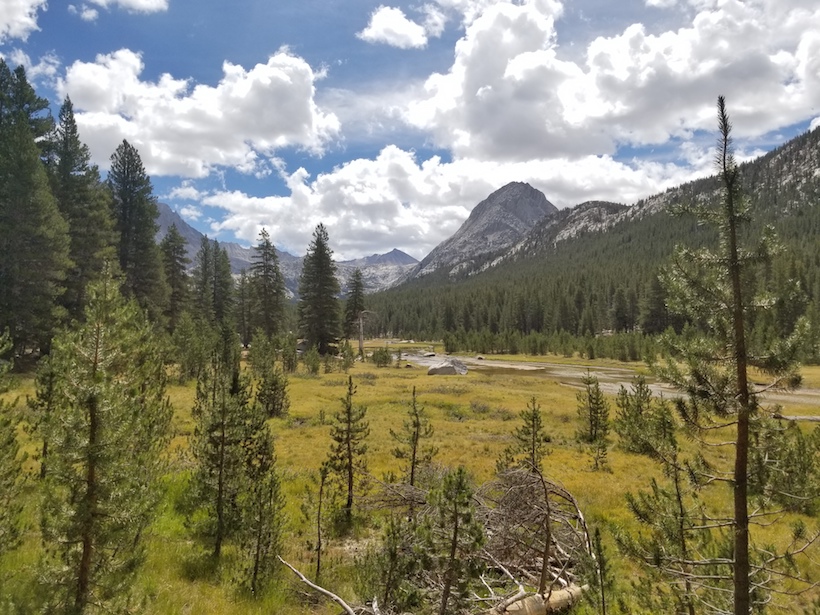Mile for mile, the John Muir Trail is one of the most scenic hikes on Earth. The footpath—never actually hiked by John Muir—starts in Ahwahnee (Yosemite Valley) and follows a series of lush meadows, granite lake basins, and high alpine mountain passes for over 200 miles (320 kilometers) along the spine of the Sierra Nevada to the top of Tumanguya (Mount Whitney), the highest peak in the lower 48 states.
Construction of the John Muir Trail (JMT) began in 1915, the year after the conservationist’s death. But Indigenous people had already been traveling throughout the Sierra for thousands of years on a network of trails known as Nüümü Poyo, or People’s Paths. Long before the National Park Service began blasting out trails with dynamite, the Paiute and other tribes etched them out of the wilderness with bare feet and kept them open by setting fires.
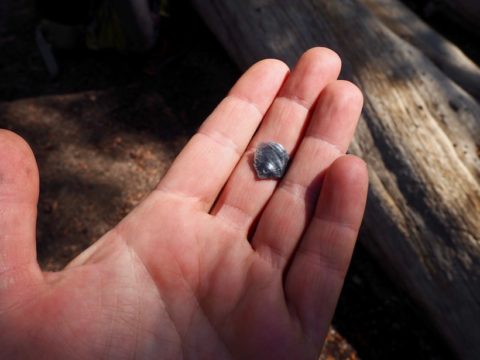
On my 27-day backpacking trip on the John Muir Trail in August, I walked through many burn scars from past fire seasons and experienced only a few moderately smoky days. Within weeks of finishing the trail, however, the lightning-set Creek and Sequoia Complex Fires ravaged some of the forests I had just hiked through. Hundreds of hikers were evacuated from the JMT and other trails, which were closed to recreation for the remainder of the fire season.
The scale of the 2020 wildfire season seems unprecedented, with a record 4 million acres burned so far, including the state’s first gigafire: the August Complex, which has burned over 1 million acres. But widespread fire is not new to California. Although some residents and recreationists worry that megafire seasons are becoming the new normal, deeper history suggests that California’s fire-prone ecosystems are returning to presuppression fire patterns that Indigenous people coexisted with for thousands of years.
Fire, Forever
The earliest archaeological sites found in the Sierra date back 8,000 years, and a few artifacts may be even older. “After the last glacial period ended around 10,000 years ago, people moved right in,” said Linn Gassaway, an archaeologist and fire specialist with the U.S. Forest Service who has studied Indigenous burn practices in Yosemite Valley. “There has never been a time period of mixed conifer forests in the Sierras without people living on the landscape.”
Studies have shown that before 1850, between 4.5 million and 12 million acres of land burned in California each year (more than during the 2020 fire season), with many of those fires intentionally set.
Under its typical climate of hot, dry summers, California by autumn is primed to burn. Why would Indigenous people intentionally set even more fires? Before European contact, as many as 350,000 Indigenous people were making a living off the land in California. Fire was used to clear space for villages, gathering areas, and trails and was an important tool in cultivating higher yields of edible and useful plants.
“John Muir said that the Indians lived in a Garden of Eden. What he didn’t realize is that we created the garden,” said Ron Goode, tribal chairman of the North Fork Mono Tribe, located on the western slope of the Sierra. “We cultivated it over thousands of years, and the most important tool we used was fire.”
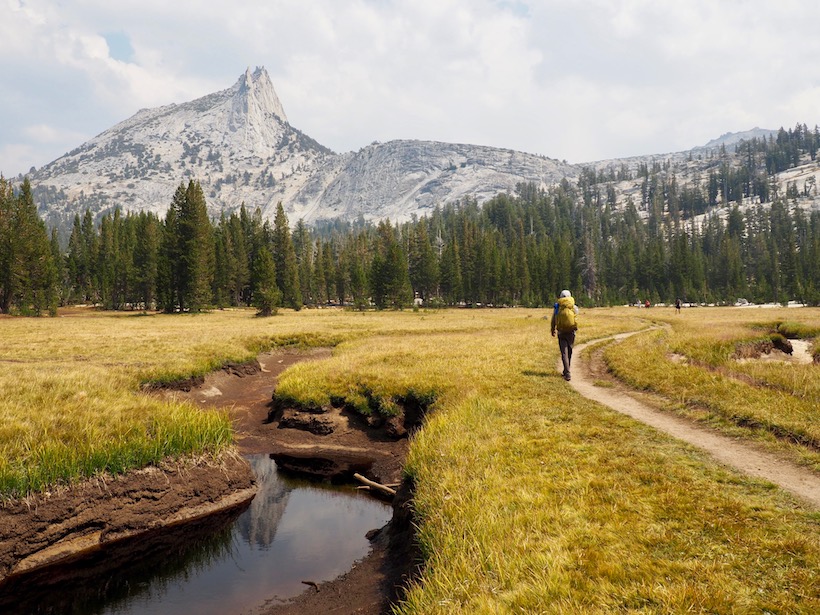
“When John Muir got to Yosemite Valley, he didn’t realize that the beautiful valley with wide-open meadows that he fell in love with was created through the Indigenous relationship with fire.”
Yosemite Valley, where the JMT traditionally begins, is a classic example of how Indigenous people used fire to tend the landscape, said Don Hankins, a pyrogeographer at California State University, Chico. “When John Muir got to Yosemite Valley, he didn’t realize that the beautiful valley with wide-open meadows that he fell in love with was created through the Indigenous relationship with fire.”
Studies of prehistoric fire patterns in Yosemite Valley show that Miwok inhabitants burned small sections of the 3,800-acre (1,535-hectare) valley on a continuous, rotating basis, said Gassaway. “These weren’t large landscape-level fires—they weren’t burning down the whole valley. They were burning 2–3 acres at a time.” Regular burns helped increase the production of acorns from black oaks and other edible and useful plants, like bear grass used in basketry.
Burn scars and tree ring studies show that this pattern stopped abruptly in 1890, when Yosemite Valley was christened a national park. Within a few decades, conifers began encroaching on the valley’s celebrated meadows, competing with the oaks. It was not until the 1960s that the National Park Service reintroduced controlled fire into the landscape and not until the 1990s that burning became a regular part of park maintenance, Gassaway said.
Fighting Fire with Fire
We were 20 days into our 27-day backpacking trip on the John Muir Trail when the first wisps of smoke appeared in the sky. By the end of that day, 12,942-foot (3,945-meter) Banner Peak was almost totally lost in haze.
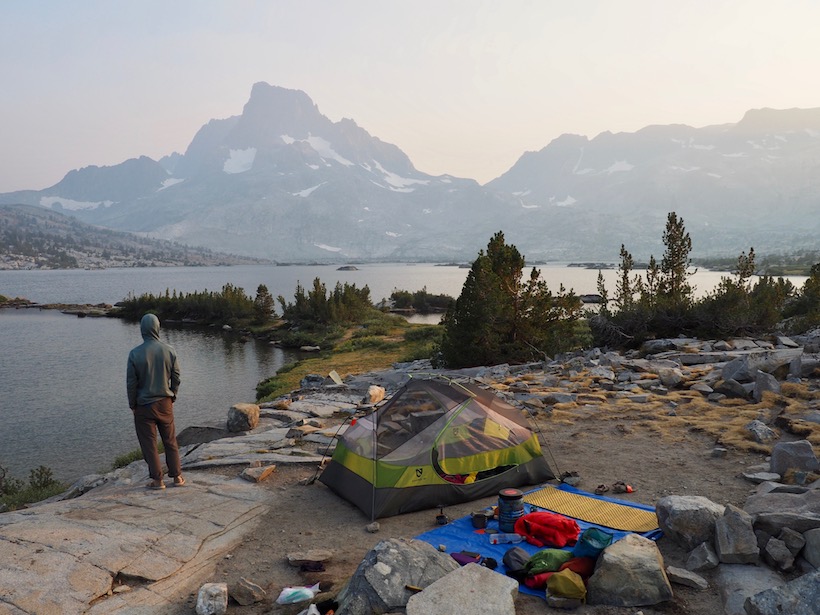
Having been without cell service for days, we didn’t know where the smoke was coming from or whether fire was a threat to us on the trail. We would find out later that the smoke was possibly drifting in from fires near Reno, Nev.; Mono Lake; and Sequoia National Forest. Over the next week, as we made our way north to Yosemite (we hiked the JMT “backward,” south to north), the smoke came and went, usually faint in the morning, thicker in the evenings, blanketing Yosemite’s Tuolumne Meadows but lifting for our grand finale on top of Clouds Rest.
Two weeks after we finished the JMT, the Creek Fire ignited and quickly spread into a conflagration.
After more than a century of fire suppression policies intended to protect people, property, and timber, forests in the Sierra and across the West are loaded with excess fuel. That excess, combined with long-term drought, has created a statewide tinderbox that is ready to ignite. “These large wildfires are playing catch-up, burning what we haven’t,” Gassaway said.
“Decades of fire ecology research and thousands of years of cultural knowledge are telling us: We need to be burning a lot more than we’re burning now.”
Paradoxically, tempering the megafires will require setting more fires, Hankins said. “Decades of fire ecology research and thousands of years of cultural knowledge are telling us: We need to be burning a lot more than we’re burning now,” he said.
The main barriers to conducting more controlled burns are the public’s aversion to smoke and general unease at the prospect of more fires, as well as issues surrounding liability when controlled burns get out of hand, Hankins said.
“We need to give tribes the [legal] capacity to burn on their own land and train more [scientists] to recognize what’s ecologically and culturally appropriate for the landscape,” he said. “It’s not just about creating a blackened spot on the ground. It’s about creating a more resilient landscape that flourishes after the right kind of fire.”
Whereas wildfires often produce copious smoke that affects air quality over large regions, controlled burns tend to be cooler and produce less smoke. “What we need to do is to burn small and burn continually,” Goode said. “If you burn every day, you can accomplish a lot. If you want to wait for the perfect window for a big burn, you might never get to light it.”
“Indigenous people know how to coexist with wildfire. They have to, it’s a matter of survival,” Hankins said. “And yet they have been kept out of these discussions until just recently.”
More Fires, More Meadows
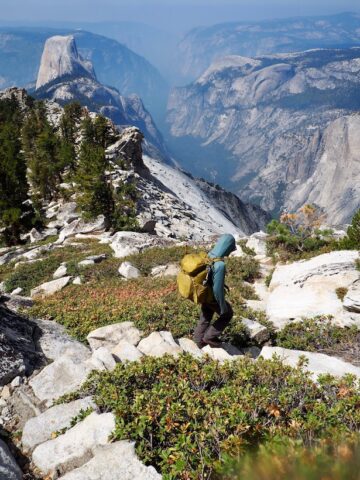
As terrifying as California’s megawildfire seasons have been, if the past is any indicator, the future may be even more fiery. “If we’re looking at a warmer, drier climate in the future, we could see even larger wildfires,” Hankins said.
Goode prefers to focus on the greener, wetter future that fires will bring to his homelands in the Sierra, with thousands of overgrown meadows restored by fire to their former glory. More meadows mean more buffers against fast spreading wildfires and more water in the watershed, Goode said. “When you restore a meadow, the springs run full blast all year.”
As long as people travel through the Sierra, the People’s Paths will remain etched across the landscape, and the John Muir Trail’s stairs and switchbacks—blasted out of granite, which erodes at a rate of 2.5 centimeters every 10,000 years—will continue to usher backpackers from the meadows to the mountains for many generations to come.
The original path makers and caretakers of the Sierra will also remain, steadfast in their knowledge of how to coexist with fire, Goode said. “People have a misperception that Indians were a part of America’s past but not the present or the future,” he said. “We are still here, and we will always be here.”
—Mary Caperton Morton (@theblondecoyote), Science Writer
Living in Geologic Time is a series of personal accounts that highlight the past, present, and future of famous landmarks on geologic timescales.
Citation:
Morton, M. C. (2020), Traversing the High Sierra on the People’s Paths, Eos, 101, https://doi.org/10.1029/2020EO150870. Published on 02 November 2020.
Text © 2020. The authors. CC BY-NC-ND 3.0
Except where otherwise noted, images are subject to copyright. Any reuse without express permission from the copyright owner is prohibited.

